Update: Pines Bridge project
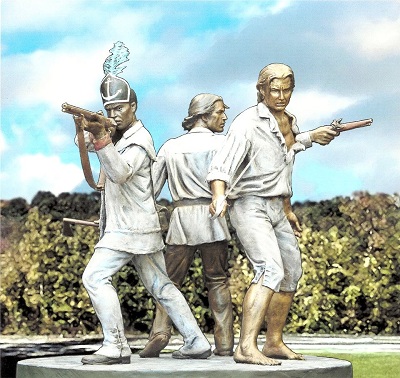
Our friend Michael Kahn just sent me an update on the Pines Bridge Monument Project:
The Pines Bridge Monument Committee, in conjunction with the Yorktown Chamber of Commerce, the Yorktown Historical Society, and the Yorktown Planning Department is pleased to announce the selection of a sculptor and design for the Battle of Pines Bridge Monument. On May 14, 1781, just after sunrise there was a surprise attack on the first Rhode Island Regiment headquartered at the Davenport House in Croton Heights. This regiment was comprised of African American, Native American and European American soldiers under the command of Colonel Christopher Greene.
After months deliberating and considering the diverse designs, we have entered into negotiations with renowned sculptor Jay Warren from Rogue River, Oregon. Mr. Warren's previous commissions include both portions of the New Jersey World War II Memorial, the New Jersey Korean War Memorial, Victims of Terrorism Memorial at the Raritan Bay Waterfront Park overlooking the World Trade Center Site; John Coltrane Monument in High Point, NC, and the Sojourner Truth Memorial in Northampton, MA among many others (www.warrensculpture.com).
As you can see by the artist's sketch, the anticipated sculpture is extraordinary. You can now purchase bricks in support of the project here. Congrats to Michael and his committee for proving that commemorating our collective history matters.
Vampires suck. Zombies don't.
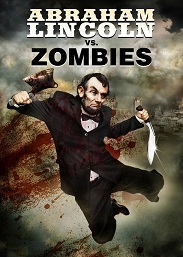 I’m sure many of you have heard about the upcoming film titled “Abraham Lincoln: Vampire Hunter.” As both a historian and a film producer I cannot believe something this absurd found its way to the big screen. I suspect that it won’t break any box office records once it’s released. The mere concept of our 16th president hunting down vampires is absolutely ridiculous and with the continued ‘sissyfication’ of these bloodsuckers (courtesy of the Twilight Series) I don’t anticipate much of a scare.
I’m sure many of you have heard about the upcoming film titled “Abraham Lincoln: Vampire Hunter.” As both a historian and a film producer I cannot believe something this absurd found its way to the big screen. I suspect that it won’t break any box office records once it’s released. The mere concept of our 16th president hunting down vampires is absolutely ridiculous and with the continued ‘sissyfication’ of these bloodsuckers (courtesy of the Twilight Series) I don’t anticipate much of a scare.
On the other hand, there is another film, VERY similar in scope, but much more believable. It is titled “Abraham Lincoln vs. Zombies” and already looks to be a winner. This historically-hysterical film stars our friend Bill Oberst Jr. (Sherman’s March) as the undead-slaying emancipator and is set for a May 22 release. According to the film’s promo:
While the Civil War rages on, President Abraham Lincoln must undertake an even more daunting task: Destroying the Confederate Undead. Oberst, known to over 60 million Facebook users as the cyber-stalker in Jason Zada’s viral Facebook application Take This Lollipop, says it is one of the best roles he’s ever had, and he’s playing it straight. The actors says, “Richard Schenkman’s script is an incredibly fun mix of alternate history and horror. This is very much the Lincoln of history...except that he battles the walking dead with a bloody farm implement.” Many of the film’s lead zombies are being played by self-professed ‘zombie geeks;’ actors who specialize in portraying the undead, like Perry Foster (The Walking Dead). The production is operating under a “curse” placed on it by an anonymous Savannah resident who wrote in an e-mail to The Asylum: “I place the Curse Of Savannah upon your head and may it follow you the rest of your life if you make this film here. You have been warned.” Savannah locations have included the historic Fort Pulaski, where Confederate troops battled a Union onslaught in 1862, leaving nearly 400 dead.”
So once again, this movie is about Abraham Lincoln killing zombies. N-O-T vampires. Plausible? Well... (I bet its more historically accurate than a David Barton lecture.) Awesome? Absolutely! Maybe I'll get Bill to provide us with some exclusive insights on this fun project. Afterall, he is the creepiest and hardest working guy in showbusiness. He's also one of the nicest guys you'll ever meet.
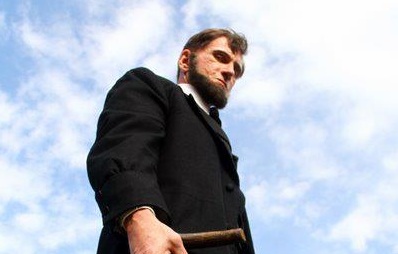
Abraham Lincoln vs. Zombies (2012) Movie Image
Op-Ed: Question everything - especially them
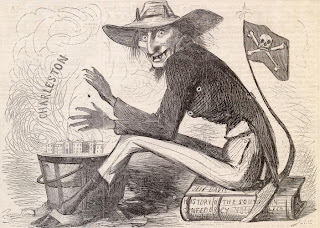 As a recovering Confederate-apologist, I have become quite sensitive to the propagation of Lost Cause mythology that is so pervasive among southern heritage bloggers today. Since my conversion I have come to realize that there is such a vast difference between writing Confederate history and worshipping it. I am most irritated over the Confederate-apologist’s constant use of the term “revisionist” when referring to anyone who disagrees with their version of the Civil War.
As a recovering Confederate-apologist, I have become quite sensitive to the propagation of Lost Cause mythology that is so pervasive among southern heritage bloggers today. Since my conversion I have come to realize that there is such a vast difference between writing Confederate history and worshipping it. I am most irritated over the Confederate-apologist’s constant use of the term “revisionist” when referring to anyone who disagrees with their version of the Civil War.
The implication of that statement is that the act of revision is a bad thing. This could not be further from the truth. Revision is actually good. Revision means to expand on - or correct. According to the textbook definition:
Historical revisionism is the critical re-examination of presumed historical facts and existing historiography, it is the reinterpretation of orthodox views on evidence, motivations, and decision-making processes surrounding a historical event. The constant revision of history is part of the normal scholarly process of writing history.
How can that possibly be looked upon as a negative? After all, what IS the study of history, but the search for deeper meaning? The fact of the matter is that these southern heritage folks have zero interest in deeper meaning. They are completely satisfied with their own versions of historical memory and have absolutely no desire to evolve in these perceptions. They also appear to live in constant fear of learning anything new. As if that is also a bad thing. I was once told by a southern writer that perhaps there isn’t anything new to add to the discussion. His exact words were: “Maybe there's nothing new to tell. I don’t seek the new - just the facts. New and faddish are related.” What?
You may have noticed that I don't really plug my first three books on this blog anymore. Why? Because I once felt the exact same way as these folks and it definitely skewed my historical interpretations. Thankfully I realized my bias and worked very hard on my last three books to correct that. Now I find myself debating the very same folks that I once considered kindred spirits. Fortunately my academic friends have been trying very hard to convince me that you cannot reason with these folks. They are fanatically set in their ways and they will not waiver. Don't try and debate them they say. Instead, question them…
Considering the overwhelming historical record, it's appropriate to ask: Why is it so difficult for so many Confederate apologists to admit that the ONE state's right that mattered above all else - according to the secessionists themselves - was the 'right' to own slaves? That the one type of 'property' that they were concerned with, above all else, was the nearly 4 million slaves that they owned? Worth several billion dollars in 1860 money - which translates into the equivalent of how many tens of billions, today?
I believe that many people are in fact sincere when they say things like 'heritage, not hate' and 'it wasn't really about slavery.' But the only reason they can say these things sincerely, I believe, is because they are genuinely ignorant of what the secessionists themselves wrote and said to justify their cause. We are simply not taught these things in history classes in school, not shown the original speeches and documents that make so clear what it was about. But with the 150th anniversary of the Civil War fast upon us, the historical revisionism will be coming fast and furious. So we had best be prepared to confront the apologists with the words and documents of the secessionists.
Ask them to explain the Confederate Constitution’s provisions on slavery. Ask them to explain the various declarations of the causes of secession put out by the states. Ask them to explain what the secession commissioners wrote and said, as official representatives of their states. And see if, once they are informed and educated, they can still bring themselves to romanticize the Lost Cause. - What Caused the Civil War: or, How to argue with a Confederate apologist
I embrace this newfound perspective not in an attempt to disrespect Confederate history or those who have an attachment to it...I simply believe that we do a great disservice when we alter historical memory in support of a preconceived notion or agenda. Unfortunately, this has become the norm among many so called "Pro-Confederate" heritage groups. Far too many folks are flat out ignoring or disregarding the issue of slavery, or propagating myths such as the Black Confederates.
In their efforts to legitimate their perspective, they are actually creating a false memory of their forefathers. This renders their credibility useless and nullifies their counter-argument capabilities.
Coming up...
Clip shot by an attendee at one of my related lectures at the Manassas Museum
In keeping with this month’s theme I am working on a post about segregation via separate (side) entrances in our area’s most historic churches. This includes Massaponnax Baptist Church, Old Salem Church and Zion United Methodist Church. I have always been fascinated with the hypocrisy of the early ‘integrated congregations’ that worshipped ‘together’ prior to the Civil War and how racism was often masked as paternalism. The fact that these three churches’ actual architecture was designed in such a way to maintain the social order of the period is quite telling.
In my studies over the years into the role of religion during the Civil War, I have found that many of my fellow Christians were among the most prejudice. I am hoping to include some recollections from both white and black members of the congregation (whenever possible) along with excerpts from my book Historical Churches of Fredericksburg and my lecture titled Houses of the Holy: A study in pre-war race relations at Fredericksburg's landmark churches. Stay tuned…
Posted by ny5/pinstripepress
at 10:32 AM EST
Updated: Wednesday, 15 February 2012 2:11 PM EST
Permalink |
Share This Post
In honor of Black History Month...
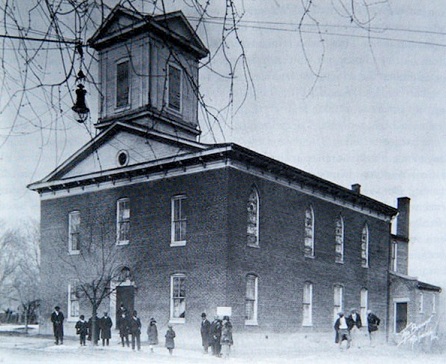
Shiloh Baptist (Old Site), Fredericksburg, VA
Here is an excerpt on Shiloh Baptist (Old Site) as well as a link to a PDF of the entire chapter. SBOS is the first and oldest African-American church here in Fredericksburg and one of the congregations profiled in my book Historic Churches of Fredericksburg, Houses of the Holy.
Located at 801 Sophia Street, Shiloh Baptist Church was sold to its black congregation by the resident white church for a sum of $500. Shortly after gaining its independence, the African American congregation flourished, building a large membership of both free and slave members. After the Emancipation Proclamation took effect, the congregation appointed its first black pastor, Reverend George Dixon. When the Civil War ended, members who had fled north to escape the fighting returned and the church once again thrived. Today there are two Shiloh Baptist Churches in the Fredericksburg area (Old Site and New Site). During the Civil War, the original Shiloh Church served as a hospital for Union soldiers.
As presented in the previous chapter, Shiloh Baptist Church (Old Site) evolved from the integrated Fredericksburg Baptist Church. The original congregation included both white and black members, and by the 1840s over 75 percent of the eight-hundred-member assembly was black. Not surprisingly, the archived transcripts recalling the division of the church and the sale of its building to the African American membership differ greatly in tone between the two races. This is completely understandable, given the time in American history when they were recorded. Although both churches share a historical bond today, this was not always the case during the racial strife of the pre–civil rights period.
In the late 1800s, the white congregation of Fredericksburg Baptist Church acknowledged the racial tensions leading up to the separation, but presented the split as a magnanimous gesture on their part. The African American records, on the other hand, negatively recall the terms of dismissal and financial debates that occurred over the property. Therefore, as the white members’ point of view has been outlined in the previous section, the following recollections present the other side of the story, as written by the black congregation.
After growing in numbers for several decades, the Baptists recognized an escalating problem with the space limitations in the old building used as the first Baptist Meeting House. Both white and black members initiated a pledge drive to gain the finances that were necessary to construct a much larger sanctuary. Despite their limited resources when compared to their white counterparts, the African American population subscribed the impressive amount of $1,100 in financial support. As written in the congregation’s minutes dated September 28, 1855, the church’s “colored brethren and sisters” pledged the sum to assist in the “construction of a new building.”
At the time it is said that there were at least 625 African American members at Fredericksburg Baptist Church. This included John Washington, who escaped the bonds of slavery after crossing the Rappahannock River and entering the Union army’s encampment, which was located at Falmouth. He then proceeded to Washington, D.C., where many other members of his church had fled and established a new Shiloh Baptist Church in the nation’s capital. After the war, he wrote and published a fascinating collection of memoirs detailing his escape in 1862.
Despite worshiping together for years, tensions between the two races heightened in 1854, nearly ten years before the War Between the States would erupt over states’ rights and the institution of slavery. It was at this time that the groups began to worship separately, with the black members meeting on Sunday afternoons as opposed to the mornings. Eventually the idea of building a newer church “in town” for the white congregational members and leaving the riverside building in the hands of the black members was approved. In September of 1855, the church secretary recorded, “It has always been our intention to give up our old house of worship to the colored portion of our church.” This decision came on the heels of the pledge drive in which the African Americans had vowed to provide a large gift.
A feud ignited over what financial obligations were to be fulfilled. The white committee members insisted that no property would be officially transferred until the beneficiaries fulfilled their “moral obligation” to make good on all pledges up to the proposed sum of $1,100. After much discussion, a compromise of $500 ($400, according to Fredericksburg Baptist Church accounts) was reached between the two parties. According to the church minutes taken on February 3, 1856:
Resolved, that we shall still consider our coloured brethren as part of our church and feel it to be our duty as well as pleasure to aid them in any way we can to build up the cause of our divine master and to secure to them the peaceable occupancy of the house they now worship, with all the privileges as a branch of our church which the laws of our state extend to them.
As was often the case during this period, the Caucasian majority frequently took a paternalistic approach to its African American neighbors who were less rooted in recognition of equality and more rooted in the moral obligation to assist those souls held in bondage. Additionally, whites often perceived blacks, especially slaves, to be both ignorant and living in a state of irreligion. In their minds, even slave owners were answering the call to “go forth and make disciples of all nations,” which included those who they ironically deprived of the ability to read and write. In essence, the denial of an education in any form prevented blacks from getting out from under the intellectual shadow of the white population.
Racism obviously posed a conflict of conscience for many practicing Christians, as the very same people offering spiritual nurturing to their “coloured brethren” were often slave owners themselves. This represented a paradoxical relationship that existed between devout believers and their servants. The majority of whites appeared to have been benevolent at best about racial equality. Many citizens, even those who opposed the institution of slavery, still did not consider the black population to be equal. To some, the path to freedom for blacks meant colonization. To others, slavery had been ordained by their personal interpretations of Biblical scripture.
However, white supremacy was not embraced by all of Fredericksburg’s citizens. A local Presbyterian woman named Mary B.M. Blackford recorded the hypocrisy that she witnessed during worship as well as one minister’s efforts to seek colonization for freed blacks. She wrote:
[Slave traders] have been using the town jail for their purpose, though it is expressly contrary to law, there being no one possessed of moral courage enough to go forward to have this abuse corrected. The town jail faces the Presbyterian Church and I have sat there during the preaching and looked out at the innocent prisoners peeping through the iron bars, and have thought that they were kept there for the crime of designing to be free and to return to those God commanded them to protect and care for. The words would occur to me as I looked around on the worshippers in the Church, “Is not this the fast that I have chosen, to loose the bonds of wickedness, to undo the heavy burdens, and to let the oppressed go free, and that ye break every yoke.” At the time when my heart was weighed down by watching each day the progress made in building the brick wall that was around the negro jail spoken of above where guiltless prisoners were to be immured, and I looked around in vain for a remedy. (My dear husband did all he could do to stop it.) I was called to the door to see a plain looking country gentleman who wished to see Mr. Blackford on business. I told him Mr. B. would soon be at home and asked him to be seated. On entering into conversation with him, I discovered he had been directed by the good and holy man Father Kobler (a Methodist Preacher) to get advice from my husband as to the steps necessary to be taken to procure a passage to Liberia for a young woman, the only Slave he possessed. He told that he was about to remove with his family to Illinois, and he wished to give her her freedom and every advantage. He could have gotten, he told me, four hundred dollars for her in the neighborhood. This act of disinterestedness cheered me; it was the green spot in the moral desert I had been wandering through. I thank God for showing me just then that there were some who felt for the oppressed; it cheered and refreshed my spirits, and I can better bear to witness the progress of the jail, though I trust I shall never be hardened to such sights. The young woman who was liberated by the gentleman…was sent to town to the care of the Female Colonization Society, and was sent to Liberia by them under the protection of some missionaries who were going to that place. Along with her we sent another freed girl manumitted by Mr. Morton.*
Read entire chapter (*copy continues on page 6 of pdf)

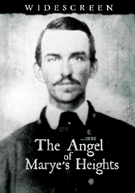
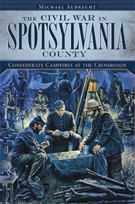
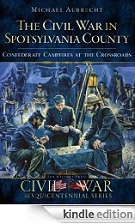

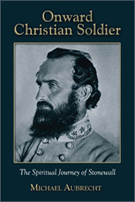

 I’m sure many of you have heard about the upcoming film titled “Abraham Lincoln: Vampire Hunter.” As both a historian and a film producer I cannot believe something this absurd found its way to the big screen. I suspect that it won’t break any box office records once it’s released. The mere concept of our 16th president hunting down vampires is absolutely ridiculous and with the continued ‘sissyfication’ of these bloodsuckers (courtesy of the Twilight Series) I don’t anticipate much of a scare.
I’m sure many of you have heard about the upcoming film titled “Abraham Lincoln: Vampire Hunter.” As both a historian and a film producer I cannot believe something this absurd found its way to the big screen. I suspect that it won’t break any box office records once it’s released. The mere concept of our 16th president hunting down vampires is absolutely ridiculous and with the continued ‘sissyfication’ of these bloodsuckers (courtesy of the Twilight Series) I don’t anticipate much of a scare. 
 As a recovering Confederate-apologist, I have become quite sensitive to the propagation of Lost Cause mythology that is so pervasive among southern heritage bloggers today. Since my conversion I have come to realize that there is such a vast difference between writing Confederate history and worshipping it. I am most irritated over the Confederate-apologist’s constant use of the term “revisionist” when referring to anyone who disagrees with their version of the Civil War.
As a recovering Confederate-apologist, I have become quite sensitive to the propagation of Lost Cause mythology that is so pervasive among southern heritage bloggers today. Since my conversion I have come to realize that there is such a vast difference between writing Confederate history and worshipping it. I am most irritated over the Confederate-apologist’s constant use of the term “revisionist” when referring to anyone who disagrees with their version of the Civil War.